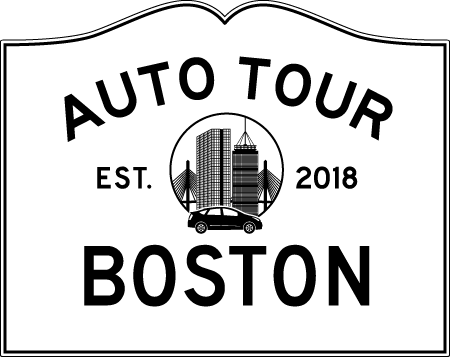Why No Auto Tour? A Brief History of Boston Tourism, Pt. 1
My idea for the Boston Auto Tour had its roots in an ancient desert landscape some forty years ago when in 1980 I toured Israel with some family members. The cost was inclusive of the tour and lodging, but not food and airfare. We traveled around the country with an official government tour guide, visited many historical, cultural, and tourist sites, and stayed at hotels, motels, farms and homes.
Along the way the driver/guide would regale us with fascinating narrative descriptions of the historical sites we were visiting. Though he stopped short of leading us into “Hava Nagila,” we enjoyed this private treatment as well as making friends with the guide and connecting with him on a personal level. That was four decades ago, but these things remain memorable.
When I assumed the role of a driver/guide in Boston, I did a little research comparing the two markets. The results should make Boston dance a jig, if not break out in a hora.
The greater Boston metropolitan area (extending roughly to the I-495 outer beltway) has a population of 4.7 million people, about half the size of Israel, with its 8.8 million. The Jerusalem Post reports that 3.3 million tourists visited Israel in 2017, spending 20 billion Israeli shekels ($5.8 billion USD).
I learned that the Massachusetts Department of Tourism and Travel, from its 2016 annual report, that the Bay State is far more popular than Israel as a tourist destination.
Some 22 million people visited the state in 2016, with over 70 percent coming by car — from within the US. All these visitors contributed $12.7 billion to the local economy. A lot of shekels.
History is arguably the leading export of both Israel and Boston – apologies to the lobstermen and olive pickers. Israel has a history going back 4,000 years and is arguably one of the centers of the world for cultural and heritage tourism as it is the center for three of the world’s major religions: Christianity, Judaism and Islam.
The Boston area has an equally important history of almost 400 years since its founding in 1630 by the Puritans, not to mention centuries of history contributed by indigenous Americans they displaced. In the post-colonial era, the Boston area is one of the most historic cities in the United States, central to the American Revolution and an incubator of much creativity in American literature, politics, and business.
Boston attracts seven times the number of visitors to Israel. This is probably due to perceptions that Israel is a dangerous flashpoint in the Middle East, but also to the fact that the population of the United States, 323 million as of this writing, has easier access to various forms of transportation. Many domestic tourists in Israel use the extensive bus system. But most foreign visitors to Israel arrive by plane (which costs roughly $1,000-1,500 per flight from the US). This may account for why a pre-arranged government auto tour is part of an Israeli package deal offered to tourists in advance along with their flight to the Holy Land.
The same arrival situation applies to foreign visitors to the Boston area.
· Except perhaps for Canadian tourists, they mostly fly in to Logan. Boston’s Department of Tourism reports that more than 35 million passengers passed through Logan Airport in 2017: 29 million domestic and 6.6 million international.
Once on the ground, visitors to Boston can experience local history in several ways.
· Many of them embark on the Freedom Trail, a free 2.5 mile self-guided pedestrian tour of the Revolutionary War sites downtown. The Trail has been welcoming visitors since 1951.
Downtown Boston is not built on a grid system such as Chicago, Los Angeles, New York, or Philadelphia. This means drivers have to negotiate a maze of one-way streets that only the most seasoned cab drivers can fathom. This is perhaps why there are many public transportation options: bus, subway, commuter rail and now a large advanced network of bike lanes in addition to a 30-year old downtown tourist trolley business. Add to this the quirkily amphibian Duck Boat Tours, which claims to have given more than half a million 90-minute tours in 2016 for an average ticket price of $40.
Despite all these options, Boston offers few guided auto tours of the sort I experienced in Israel years ago. Isn’t it high time for a seasoned metro-Boston driver to help visitors navigate the impossibly tortuous cityscape?
Now, there is an Uber driver who knows his beans.

